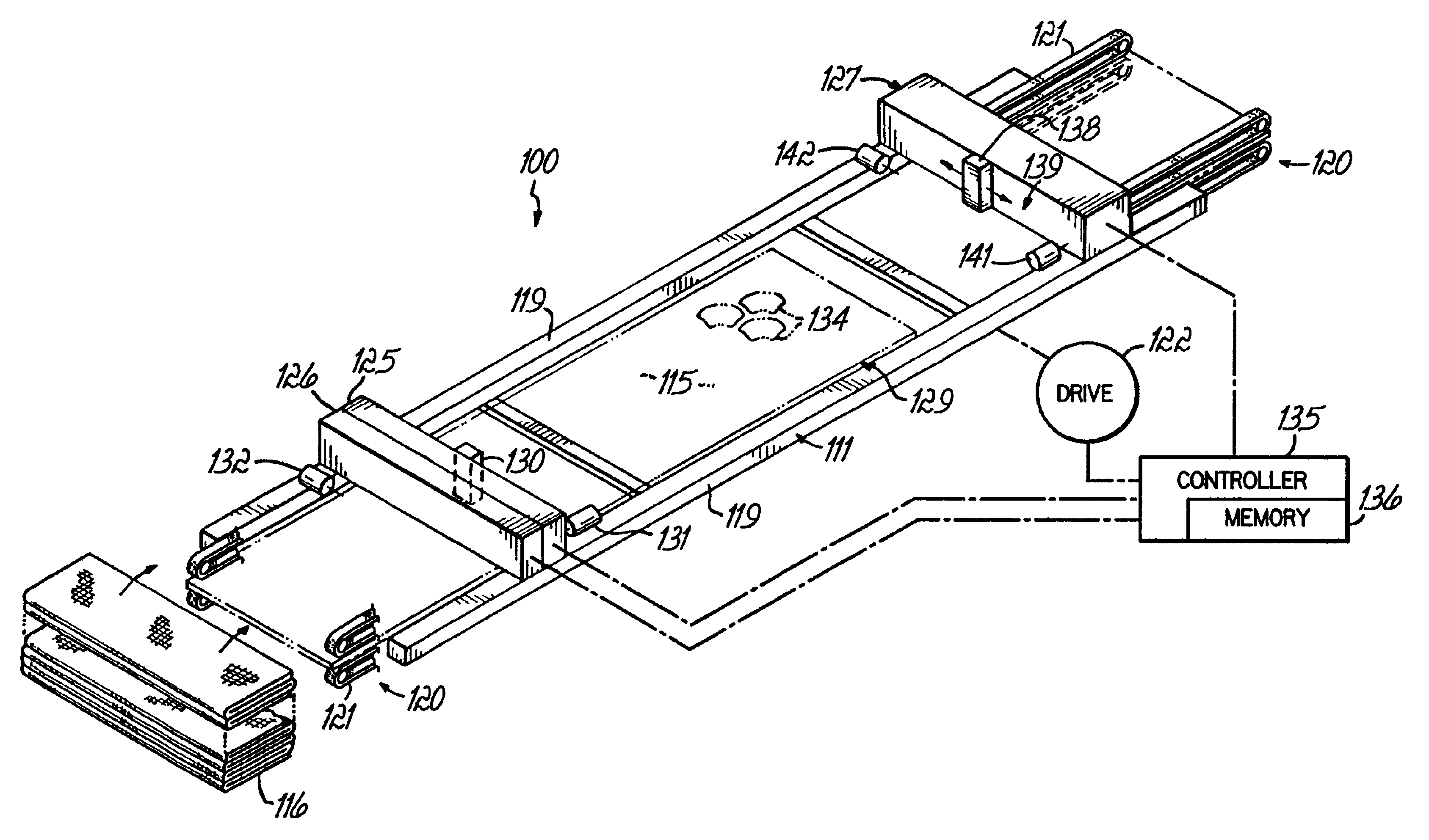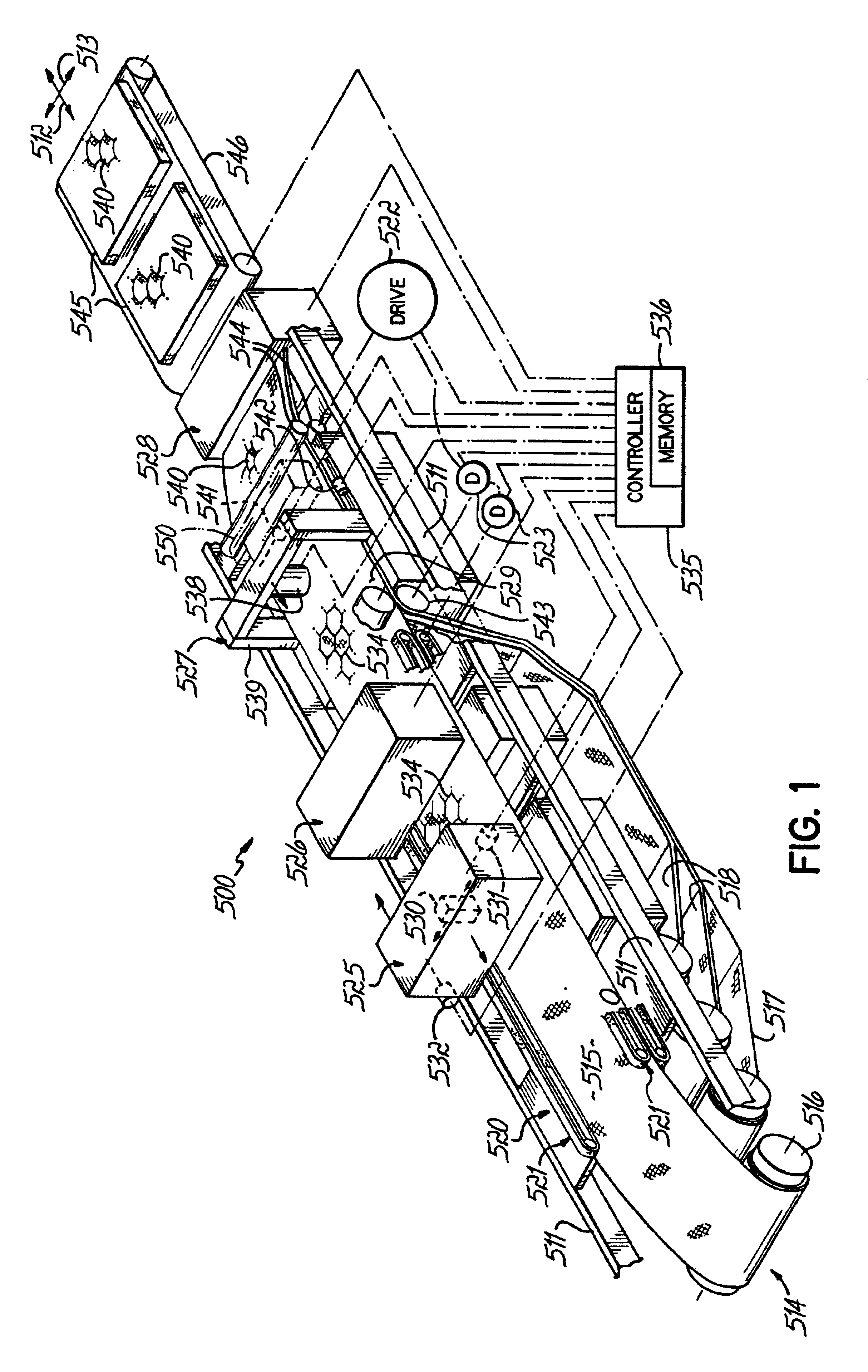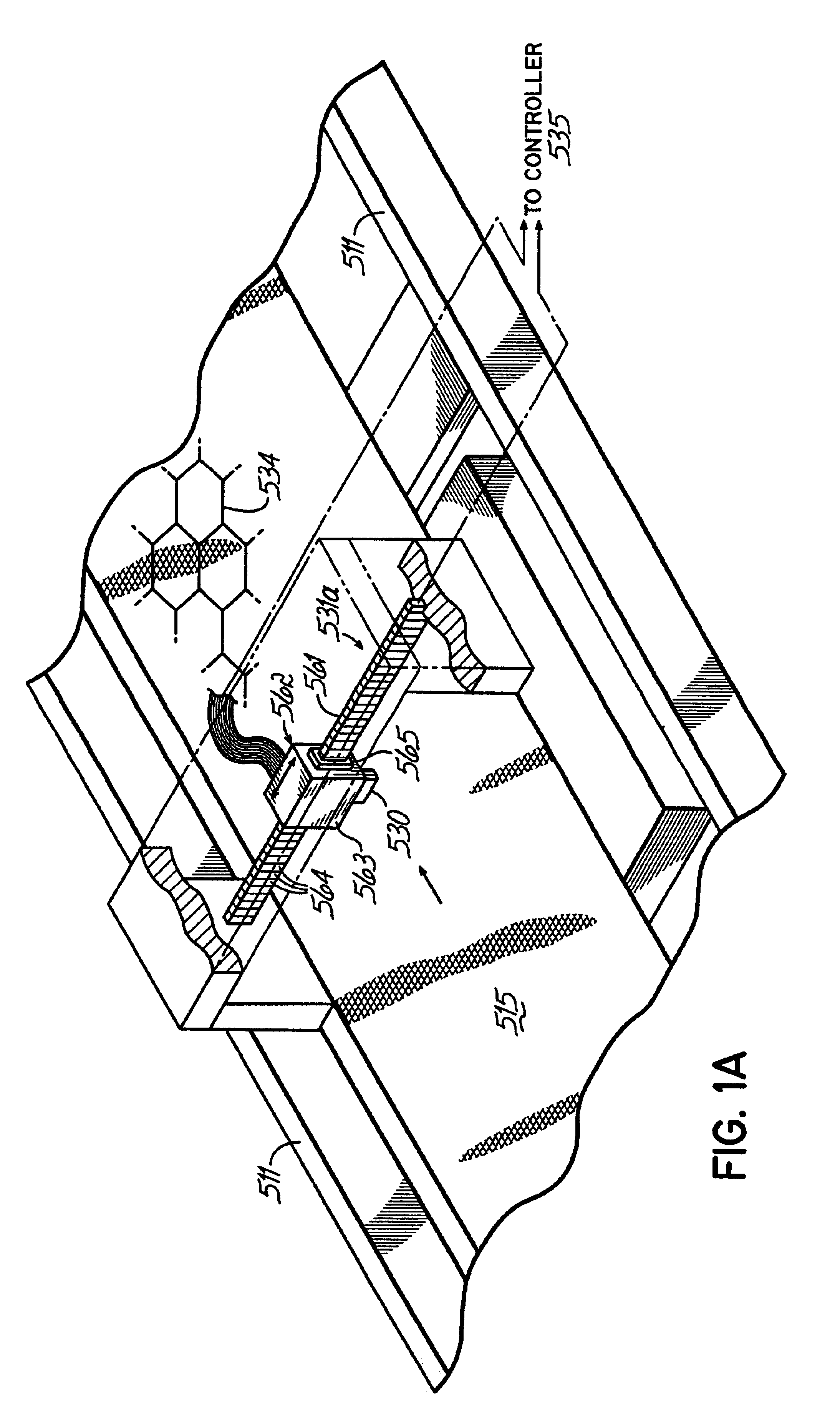Printing and quilting method and apparatus
a printing and quilting technology, applied in the field of quilting, can solve the problems of affecting the quality of the quilting of the pre-applied pattern or the quilting of the pattern details of a fraction of an inch in scale, is difficult to achieve, and is not usually attempted to combine the quilting with the pre-applied printed or woven pattern in the fabric, which would require registration of the quilting with the pre-applied pattern, and contributes substantially to the manufacturing cost of bedding products.
- Summary
- Abstract
- Description
- Claims
- Application Information
AI Technical Summary
Benefits of technology
Problems solved by technology
Method used
Image
Examples
embodiment 100
FIG. 2 illustrates an embodiment 100 of the invention that employs a single-needle, frame-supported, discrete-panel quilting machine such as those described in U.S. Pat. No. 5,832,849. Other machines of that type are disclosed in U.S. Pat. Nos. 5,640,916 and 5,685,250. These single needle quilting machines apply patterns to panels 129 that are often precut. Such machines are useful for manufacturing comforters, for example. The machine 100 has an operator accessible stack 116 of preformed panels from which the panel 129 is taken and loaded into the machine 100. A conveyor or conveyor system 120 moves a set of panel supporting edge clamps or other edge securements 121 to bring the panel 129 into a fixed position for application of a combination pattern by printing onto the outer top layer 115 of the multilayered fabric 129 and by quilting the multilayered fabric 129.
In the embodiment 100, a printing station 125, which in this embodiment includes a combined drying station 126 and a qu...
embodiment 200
FIG. 3 illustrates an embodiment 200 that is similar in certain respects to the machine 500 of FIG. 1, but which further includes the capability to apply combination patterns to different areas of ticking material 215 on a wide multilayered fabric 229 to produce top or bottom panels 251 with matching or otherwise corresponding border panels 252 of a mattress cover. In the preferred arrangement, a web of ticking or facing material 215 from a roll 216 is printed in an efficient arrangement of panels on the facing material 215. The machine 200 is provided with a supply 217 of backing material and supplies 218 and 219 of filler material, which are preferably, for this embodiment, of different thicknesses at different positions across the width of the facing material 215, to form the multi-layered fabric 229, on which the arrangement of panels is then quilted at a quilting station 227 in a way that spatially corresponds to the printed patterns. The machine 200 is also provided with a sli...
embodiment 300
FIG. 4 illustrates an alternative embodiment 300 for producing matching top and bottom panels and border panels for mattress covers. The embodiment 300 includes a machine 310a of the type similar to the machine 500 described in connection with FIG. 1 above in combination with a machine 310b, which is similar to but a narrower version of machine 310a. The machine 310a produces the top and bottom panels from multilayered fabric 329a that is dimensioned according to the specification for such panels, including a relatively thick filler layer 118a of mattress size width and length. The machine 310b produces the matching or coordinated border panels from multilayered fabric 329b that is dimensioned according to the specification for border panels, including a relatively thin filler layer 118b and narrower width that corresponds to the thickness of a mattress but greater length that corresponds to the perimeter of the border of the mattress. The matching of the combination patterns applie...
PUM
 Login to View More
Login to View More Abstract
Description
Claims
Application Information
 Login to View More
Login to View More - R&D
- Intellectual Property
- Life Sciences
- Materials
- Tech Scout
- Unparalleled Data Quality
- Higher Quality Content
- 60% Fewer Hallucinations
Browse by: Latest US Patents, China's latest patents, Technical Efficacy Thesaurus, Application Domain, Technology Topic, Popular Technical Reports.
© 2025 PatSnap. All rights reserved.Legal|Privacy policy|Modern Slavery Act Transparency Statement|Sitemap|About US| Contact US: help@patsnap.com



